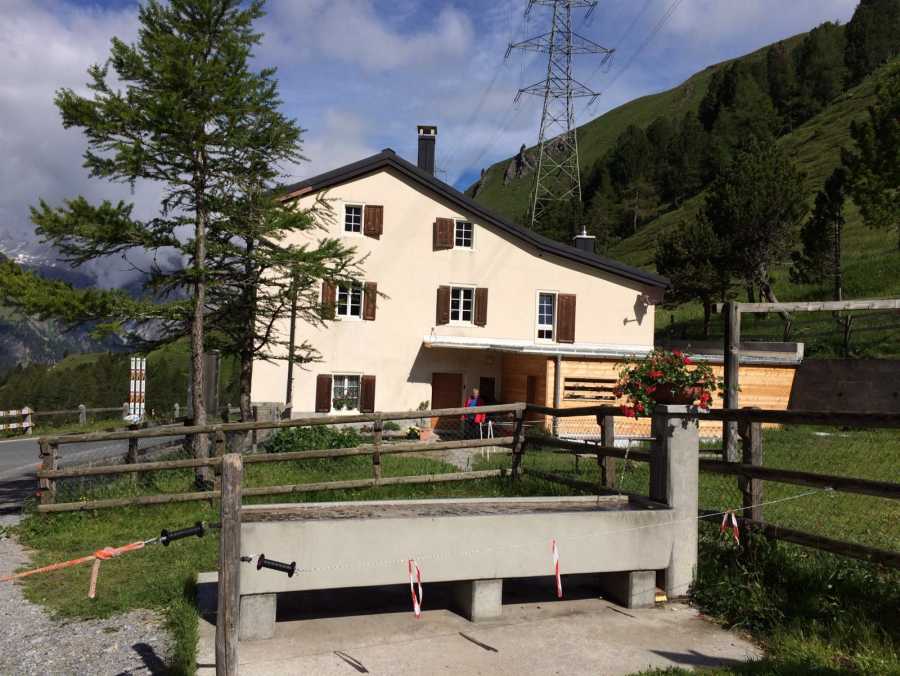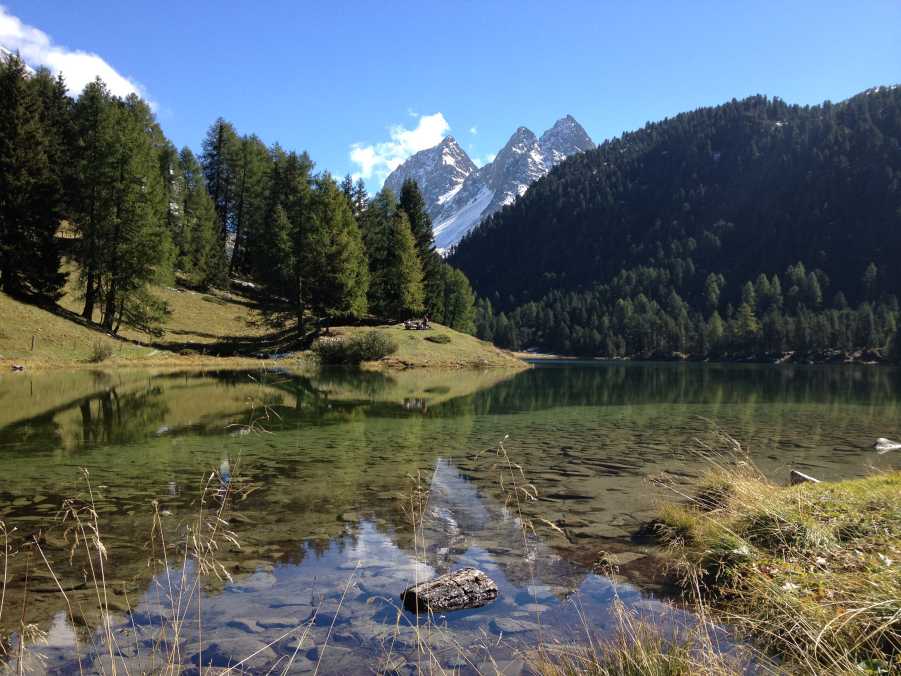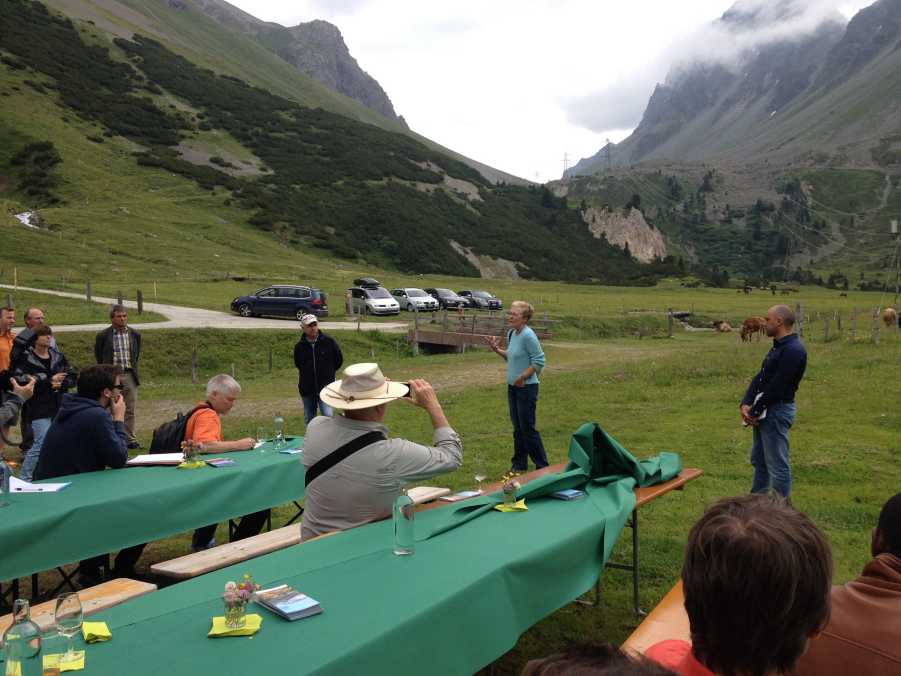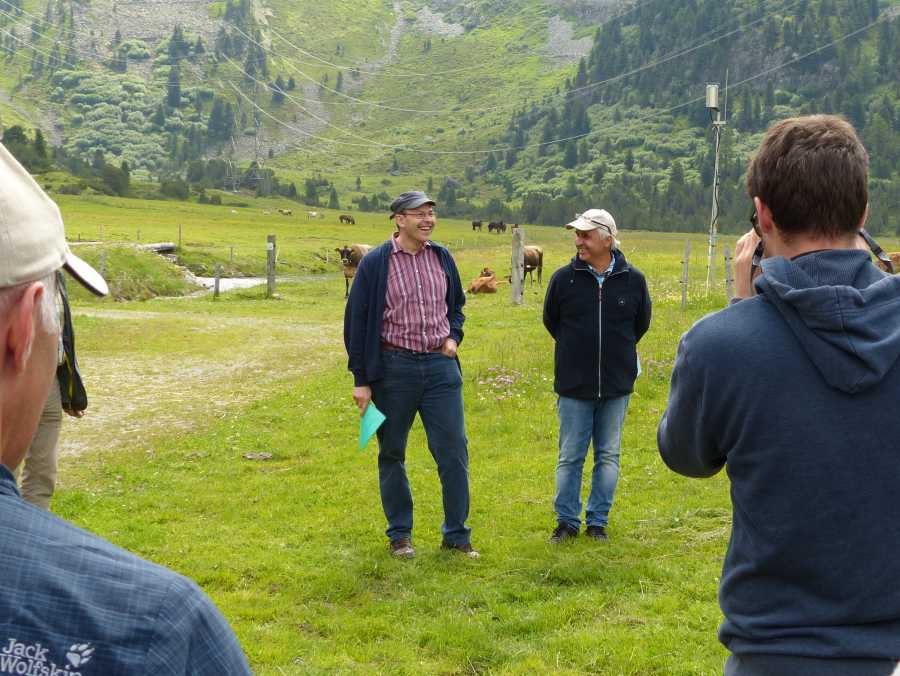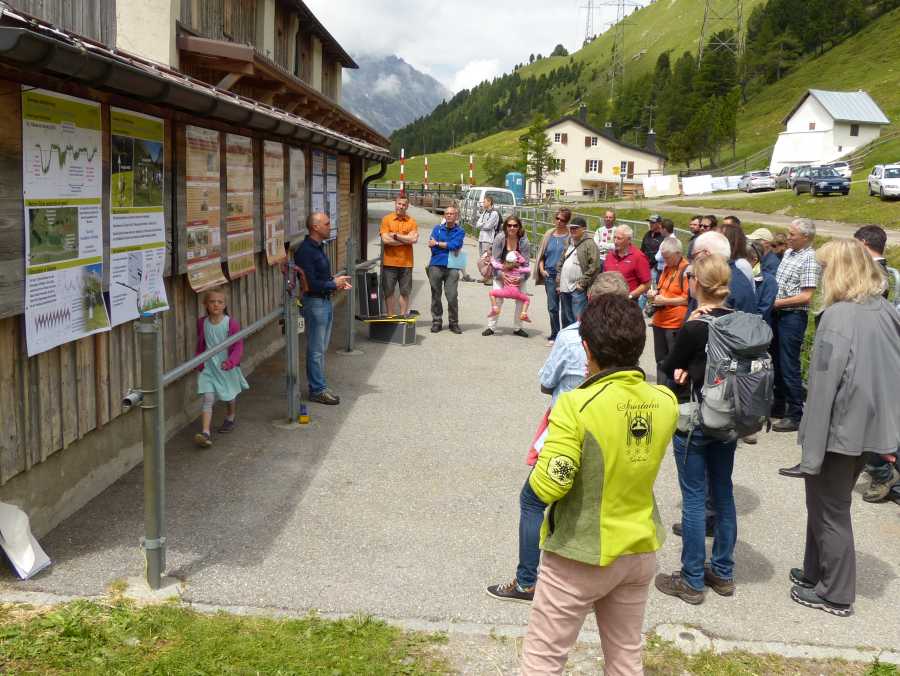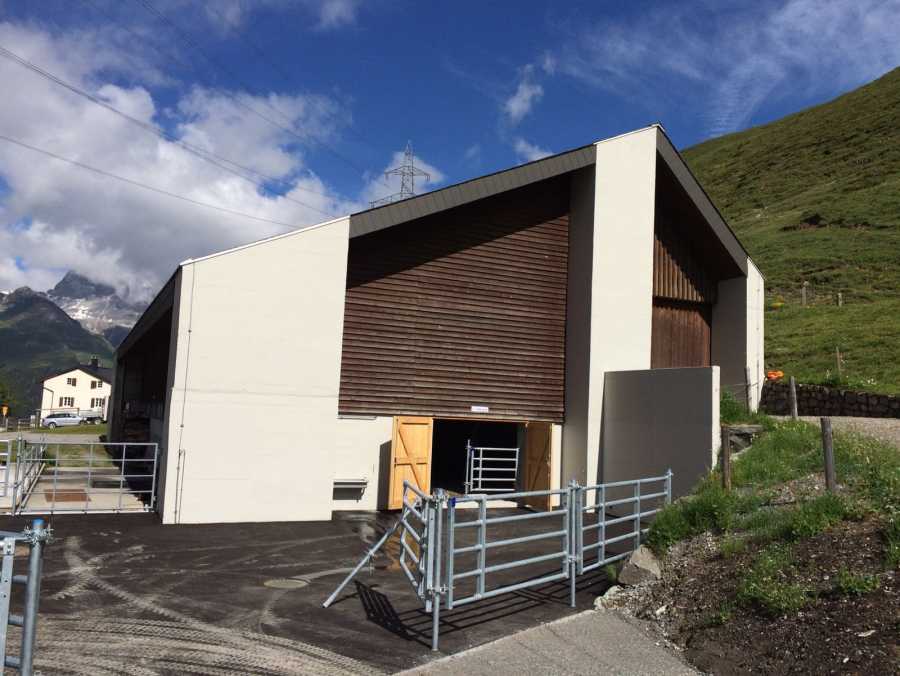From a simple hostel to a state-of-the-art research centre
- D-USYS
- D-USYS
The Alp Weissenstein research station, situated below the Albula Pass and with pastures ranging in altitude from 1,900 to 2,600 metres above sea level, has belonged to ETH Zurich since 1967. Now the building has been completely renovated, transforming what was once a guest house into a state-of-the-art research centre.
The historical Alp Weissenstein inn, nestled in the idyllic surroundings of the upper Albula valley, doesn’t look much like a simple mountain cabin. Up until the end of the 19th century, it was the only rest stop for travellers on their way to the Engadine region. Since the opening of the Albula Tunnel in 1903, however, travel routes have changed and the erstwhile guest house now serves as the main building of an ETH Zurich research station. With an area of alpine pasture comprising 234 hectares of its own property and a further 200 hectares of leased land, it offers summer grazing for some 150 livestock units – including dairy cows, suckler cows, young cattle, sheep and horses – for 75 to 80 days a year. As well as providing living accommodation for staff and researchers, the buildings include stalls for the animals in the event of a cold snap with snow and spaces for storing feed. Since the renovation, it has been possible to perform balance studies on cattle indoors and there are laboratory facilities available for preparing samples. Thanks to moveable equipment such as a mobile milking parlour and weighing scales for livestock, experiments can also be carried out on the pasture.
Current issues in livestock research
In recent years, research has focused heavily on the influence of the biodiverse alpine vegetation on the quality of meat and dairy products. The specific conditions up on the mountain pastures have a significant impact on the animals and, therefore, on the animal products derived from them – so says Joel Berard, a senior assistant in the Animal Nutrition Group and leader of the “Sustainable Feeding, Alpine Farming Systems and Quality of Food” team. Compared to grazing in the valleys, grazing on alpine pastures can substantially increase the proportion of unsaturated fatty acids (particularly omega-3 fatty acids, but also omega-6 varieties) in meat, milk and dairy products. The Animal Nutrition Group has therefore been up at Alp Weissenstein investigating issues such as what effects the farming of livestock on the alpine pastures during the summer has on the vegetation there and the role that topography plays in this. The focus here has not been just on the end products, but also on the movements and feeding behaviour of the grazing animals.
Switzerland has areas of grassland with a high level of biodiversity that can be used almost exclusively by ruminant animals. The alpine vegetation is typically characterised by, for example, a high concentration of polyphenols, particularly tannins, in the fodder plants, which prevent omega-3 fatty acids from being broken down by microbes in the animals’ rumen and help enable them to be transferred more efficiently into animal products.
Although mountain pastures are not conducive to maximising output, they are an important resource for feed production – and for tourism too. However, the complex management involved is prompting more and more farmers to give up their alpine pastures, with more areas of valuable grazing land in Switzerland being left to grow wild each year. The Animal Nutrition Group is now examining whether it is possible to use robust and adapted breeds of cattle, sheep and goats to reduce the overgrowth of scrub on pasture land and produce better-quality animal products at the same time. Working with feedstuffs that do not compete with food crops for arable farmland could also be an interesting prospect for the future.
Alpine vegetation in the spotlight
The research station’s location also offers outstanding opportunities for studying the high-altitude vegetation that grows in different soils (bedrock). Conditions in the Alps are typically characterised by, for example, reduced air pressure, strong solar irradiation, heterogeneous vegetation and short growing seasons. Yet what effect does agriculture have on the climate? This is a question that researchers such as Werner Eugster, a professor at the Institute of Agricultural Sciences, and his team are looking into. The focus is on finding strategies for reducing the emissions generated during agricultural production. This primarily concerns the pollutant gases methane, ammonia and nitrous oxide, as well as the main greenhouse gas CO₂.
Measuring stations are installed at Alp Weissenstein to record climate data. Measurements of CO₂ absorption by the vegetation and CO₂ emissions from the soils and animals are needed, for example, for modelling environmental impact (carbon footprints) and for estimating the annual greenhouse gas balance. “There is now enough electricity available up on the mountain for us to measure CO₂ levels all year round,” says a delighted Werner Eugster. “We are gaining a reputation as a state-of-the-art research centre at international level.” In the past, for instance, experiments have been carried out on vegetation under rain-free conditions (simulated drought). There is also a long-term project involving monitoring trace gas emissions from the grassland over the course of the year.
Farming in the valley, up the mountain and on alpine pastures
Alp Weissenstein forms part of a three-pronged research centre concept at ETH, along with the Agrovet-Strickhof facility in Eschikon-Lindau, which is due to open in 2017, and the Früebüel research station on Mount Walchwil at around 1,000 above sea level. With three research stations at three different altitudes – at valley level in Eschikon-Lindau, lower mountain level at Früebüel and upper mountain (alpine) level at Alp Weissenstein – the traditional alpine three-step agriculture cycle is incorporated into research activities. This is unique – and very useful for conducting fundamental research into today’s main issues.
Agrovet-Strickhof – a place of synergy
The Agrovet-Strickhof project is a collaborative research and teaching scheme involving ETH, the University of Zurich and the Strickhof agricultural college. On around 70 hectares of land, infrastructural facilities are being built with the aim of concentrating agricultural activities – including research and teaching – at valley level at the Strickhof farm in Eschikon-Lindau, in the canton of Zurich. Once the construction work at Strickhof is complete in 2017, ETH Zurich will give up its old research station in Chamau (canton of Zug). With the three institutions stepping up their research and cooperation, not only are investments being made in the Strickhof centre, but the infrastructure at the Früebüel and Alp Weissenstein sites is also being upgraded in line with the new requirements.
